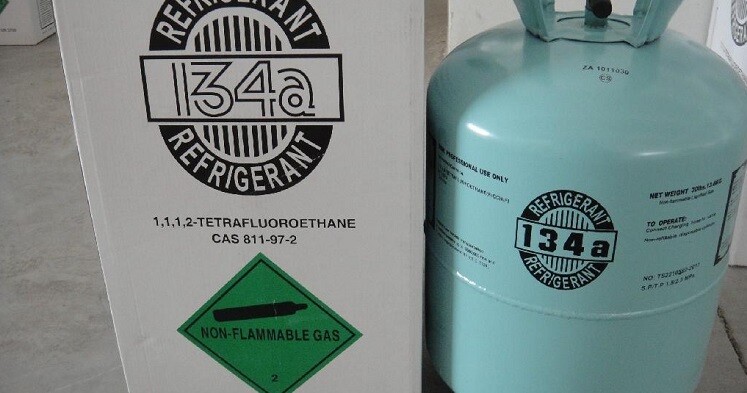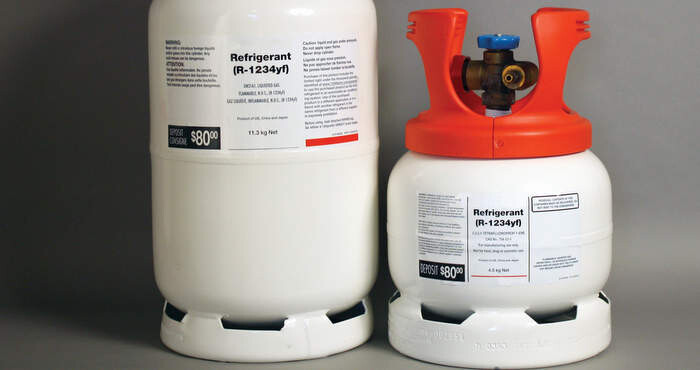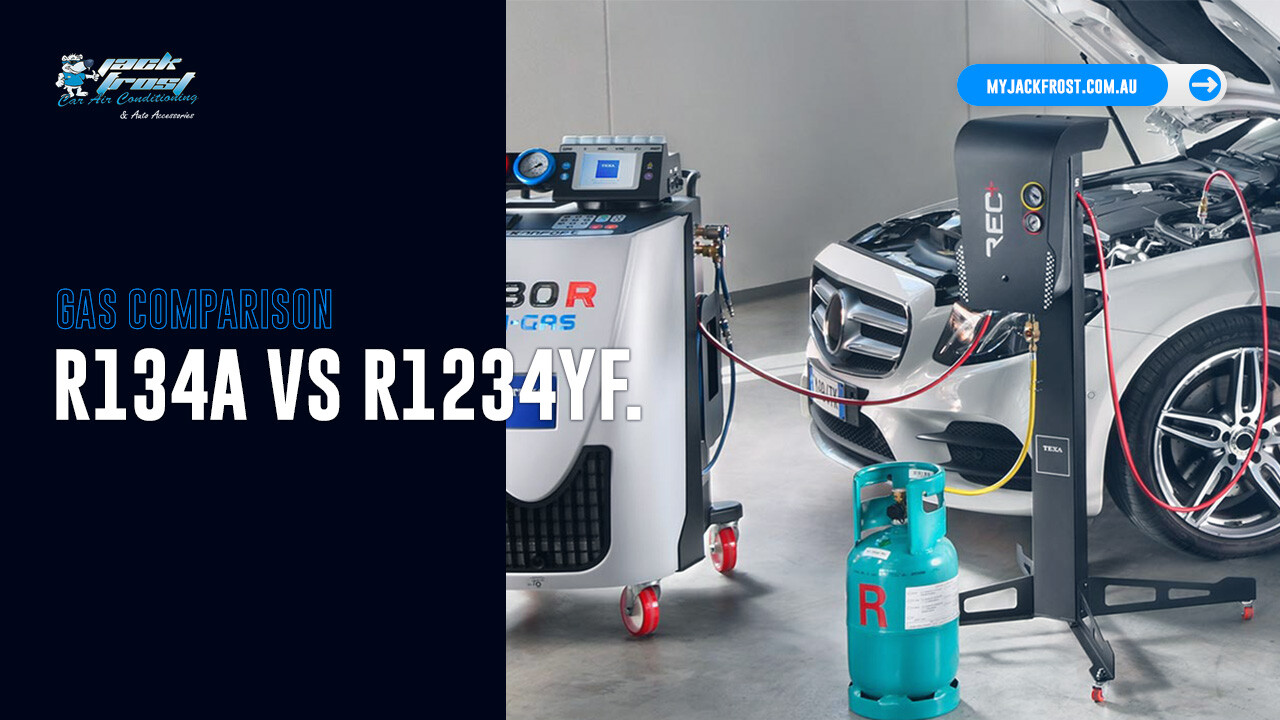r134a Gas vs r1234yf Gas
You may have noticed that A/C refrigerant on many new vehicles has started to change. For many years, OEMs used R134a. However, government mandates require OEMs to phase out R134a by the year 2021. This left OEMs scrambling to find a replacement. Many US OEMs chose to use R1234yf to replace R134a but, there are some OEMs that have chosen a different route. Let’s take look at these new refrigerants.
R134a and R1234yf are similar, however, R1234yf was created as a more environmentally friendly replacement to R134a. The biggest difference between the two, is that R1234yf is mildly flammable and does require special handling.

What is r134a Gas?
R134a is also known as Tetrafluoroethane (CF3CH2F) from the family of HFC refrigerant. With the discovery of the damaging effect of CFCs and HCFCs refrigerants to the ozone layer, the HFC family of refrigerant has been widely used as their replacement.
It is now being used as a replacement for R-12 CFC refrigerant in the area of centrifugal, rotary screw, scroll and reciprocating compressors. It is safe for normal handling as it is non-toxic, non-flammable and non-corrosive.
Currently, it is also being widely used in the air conditioning system in newer automotive vehicles. The manufacturing industry uses it in plastic foam blowing. Pharmaceuticals industry use it as a propellant. It exists in gas form when exposing to the environment as the boiling temperature is -14.9°F or -26.1°C.
This refrigerant is not 100% compatible with the lubricants and mineral-based refrigerant currently used in R-12. Design changes to the condenser and evaporator need to be done to use this refrigerant. The use of smaller hoses and 30% increase in control pressure regulations also have to be done to the system.

What is r1234yf Gas?
R1234yf is a synthetic HFO refrigerant co-developed by DuPont and Honeywell as a successor to R134a for automotive air-conditioning applications. Its global warming potential (GWP) is ultra-low, with a rating of less than 1. This means that one kilogram of R1234yf released to the atmosphere has a significantly lower greenhouse effect than a kilogram of carbon dioxide. For comparison, R134a has a GWP of 1430.
Years of intensive research were undertaken by the automotive industry to find a replacement for R134a, resulting in the selection of R1234yf as the new standard refrigerant for new systems.
Compared with R134a, considerable upgrades to component quality and robustness, as well as compliance with a number of new SAE standards, have been engineered into R1234yf systems. The systems are designed to prevent potential refrigerant leakage into the cabin.
From a service and repair standpoint, R1234yf has similar thermal properties to R134a, meaning there are only minor system layout and design differences and faults can be diagnosed using the same methods as R134a.
The biggest difference is R1234yf’s A2L flammability rating, which means it is mildly flammable. This has implications for workplace health and safety procedures and means Dangerous Goods rules apply to the storage, transport and handling of this gas.
Need a Regas? Contact Jack Frost Car A/C
Serving customers for over 20 years, Jack Frost’s mission has always been to deliver customer satisfaction providing quality services at affordable prices. Rest assured Our Technicians are trained to the highest level, so they can offer the best quality service and advice.
To request a quote for all car air conditioning repair needs, simply fill out the quote form on this page or to request an appointment head to our contact us page. We provide mobile and workshop services to all North and South Brisbane suburbs as well as the North Gold Coast.
Alternatively, you can call our office on (07) 3180 3500 or visit our Brisbane workshop located at 4/429 Creek Road, Mount Gravatt East.
Our office hours are Monday-Friday 8:00 am to 4:00 pm.




